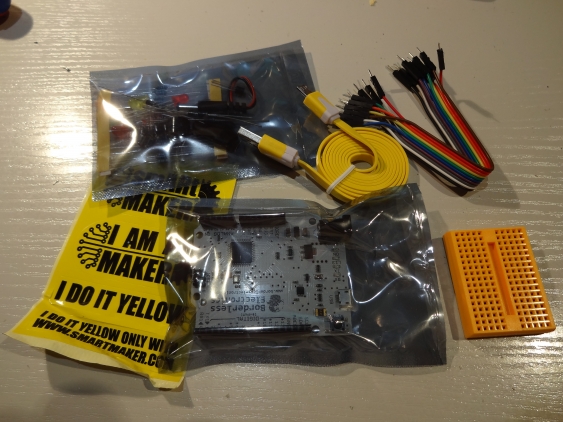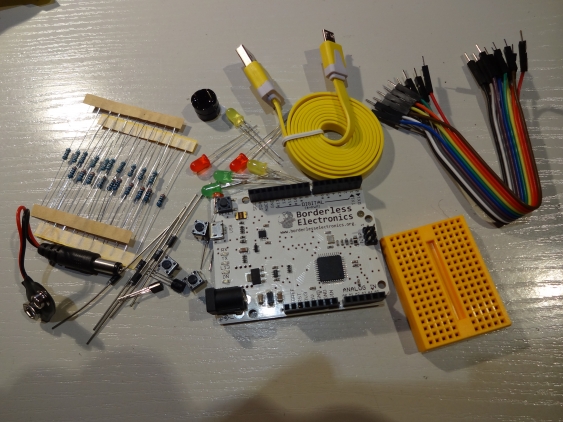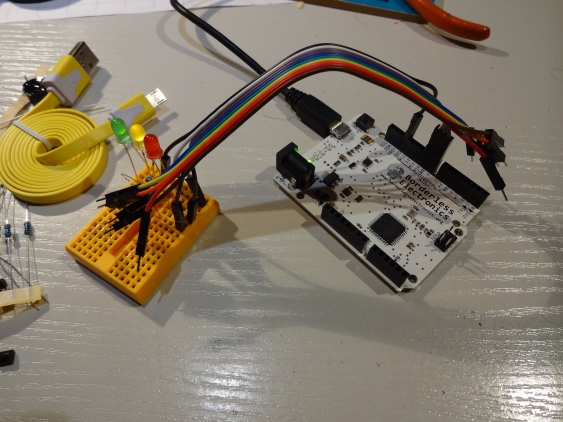« A self-powered battery tester with an EFM32
| Main |Some experiments with the LDC1000 inductive sensor »
$9 Arduino - first impressions
No, its not a cheap clone I scored off ebay. Maybe you have heard about the IndieGogo campaign from Borderless Electronics. I supported it rather early, because I could identify with its goals: everybody should have the chance to learn more about the technology which will drive out future. Hopefully my son will have this chance too… And when I can support such a project, and get an Arduino board by doing so, thats even better.
In the course of the campaign there were so much supporters that all stretch goals have been met (and they were four of them), and the list of what was supposed to be on board grew larger and larger. Harold from Borderless Electronics did a fantastic job on keeping the costs on the projected level (and even less). And even though the project was overfunded by about 1300%, he and his team managed to send out all the boards even before the original estimated date (for production end even) was reached (take this, pebble!).
And somehow the postal service matched this speed, and send the envelope with my board in it in only 13 days to my doorstep (the tracking page still thinks it hasn’t arrived in Germany yet :)
Upon opening, my first thought was “now that looks cool!”:
I find it a rather nice touch that the USB cable and the breadboard are not a standard one, but are in matching yellow color. And the cable is a flat one, which make it stand out even more.
Wait, there is more in that package!
Upon further unpacking, we can see how much electronics one can get for $9 (shipping not included :)
The Arduino board (Leonardo-compatible) looks really good - white was a good choice as PCB color, and make it seem more worthy. Also the production quality seems to be rather good (soldering is fine, only the LDO is a little bit misaligned).
Apart from what I already mentioned, there are LEDs in three color, resistors in two values (10 pieces of 330 and 1k ohm), two transistors (standard 2N2222), a buzzer, a light dependent resistor, 5 diodes, three push buttons, a 9V-to-barrel-jack adapter and a 10-wire ribbon cable with male header pins on each end.
First Arduino sketch
This should allow everybody to come with their first project without hassle. I started with building some blinkenlights - we are all fascinated with that, aren’t we?
Took only about 5 minutes from starting the Arduino IDE install (which was fortunately available in the Kubuntu repositories) from getting them to blink.
My only concern for beginners is that they will have some problems with the push buttons. They are normal PTH types, so they won’t fit into the breadboard. One might straigthen out the leads with pliers, but even then it will be heavy fit. One can either use real breadboard buttons or use a non-obvious solution: straigthen the leads with pliers, and then twist them by 90 degrees.
So what is the verdict? Its a great kit! The Borderless Electronics team achieved it goals at least for the Arduino board. I hope that the educational goals will be reached in the same manner. After all, that is the important part…


